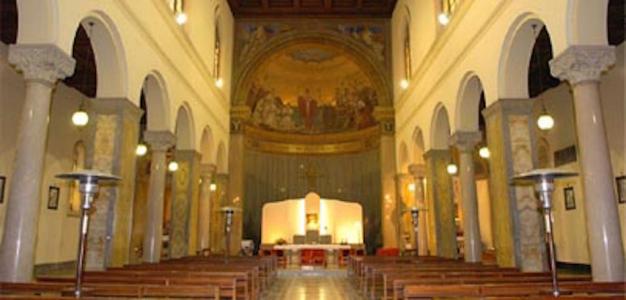The current model of seminary formation is neither as old or as monolithic as is often believed, writes Prof. Salvador Ryan
It has often been said that the seminary model of priestly formation, which was first introduced by order of the Council of Trent in the 16th Century, is a monolithic and outdated system for the training of priests.
It’s not surprising therefore that critics have long argued that reform of this seminary model is at least a number of centuries overdue.
Vigorous debate on how best to train the priests of the future is ongoing at all levels within the Church and among the faithful. The Maynooth conference aimed to assess the past, reflect on the present, and imagine the future of priestly formation. Many of the world’s leading experts on the Catholic priesthood attended.
As an ecclesiastical historian, I was already familiar with Trent (1545-1563), the Church council which established the seminary system. However, when I actually came to examine in closer detail the rolling out of this seminary model over time, I discovered that the system inaugurated in the 16th Century wasn’t quite as unchanging in reality as many commentators have previously claimed.
Complaints
The seminary system was originally designed as a response to the frequent complaints in the Middle Ages of incompetent clergy who could barely stumble their way through the words of the Latin Mass. Most medieval clergy had very little training, except for a brief apprenticeship to similarly ill-educated local priests.
Seminaries were initially designed to provide education for poor boys who wished to be priests and who could not otherwise afford the education. While it was mandated that every diocese provide such a facility, the response of individual dioceses was uneven. Seminaries, and the recruitment of staff, cost money, and bishops were often either genuinely unable, or sometimes reluctant to meet the necessary costs.
Tellingly, in Italy, the birthplace of the seminary, fewer than half of the Italian dioceses opened these institutions in the sixteenth century, and many others failed to open a seminary all through the seventeenth century.
As late as the second half of the 19th Century there were still many dioceses in Latin America which had not yet established seminaries, and those that had were often not fit for purpose.
While a great deal of emphasis is placed nowadays on the theological formation of candidates for the priesthood, a thorough grounding in theology was not a priority for the early seminaries. If one wanted to study theology, one went to a university. The early seminaries should more properly be understood as technical training colleges, schooling candidates in the basics of ministerial practice.
It’s only for the last 102 years that a man seeking ordination has been required to attend a seminary, to remain for a minimum of six years of study”
Crucially, while the Council of Trent had stipulated that each diocese should establish such an institution, it didn’t make it mandatory for clerical students to attend them. What this meant was that, for centuries after the establishment of the seminary system, one could still proceed to ordination without ever having attended such an institution.
While we are accustomed to viewing the seminary system established by the Council of Trent as monolithic and imposed from above, its architects, by contrast, were surprisingly light-handed in their approach. By and large, they handed an enormous amount of autonomy to individual bishops in their dioceses, and even refrained from making attendance at a seminary a requirement for ordination.
The length and content of a candidate’s study was similarly left to the arrangements of individual bishops and their staff. With the promulgation of the Code of Canon Law in 1917, however, this all changed. It was only then that seminary formation became a prerequisite for ordination.
Curriculum
The universal system of seminary formation that we have grown accustomed to (and which we are tempted to believe is centuries’ old) is, in fact, a much more recent development.
It’s only for the last 102 years that a man seeking ordination has been required to attend a seminary, to remain for a minimum of six years of study, and to follow a defined curriculum.
For all sorts of reasons therefore, this historical context is well worth bearing in mind when we begin to consider what alternative models of priestly formation will be most suitable for the new era we now live in.
Salvador Ryan is professor of Ecclesiastical History at St Patrick’s College, Maynooth. Along with Fr Declan Marmion SM and Fr Michael Mullaney he is co-editor of Models of Priestly Formation: Assessing the Past, Reflecting on the Present and Imagining the Future.



